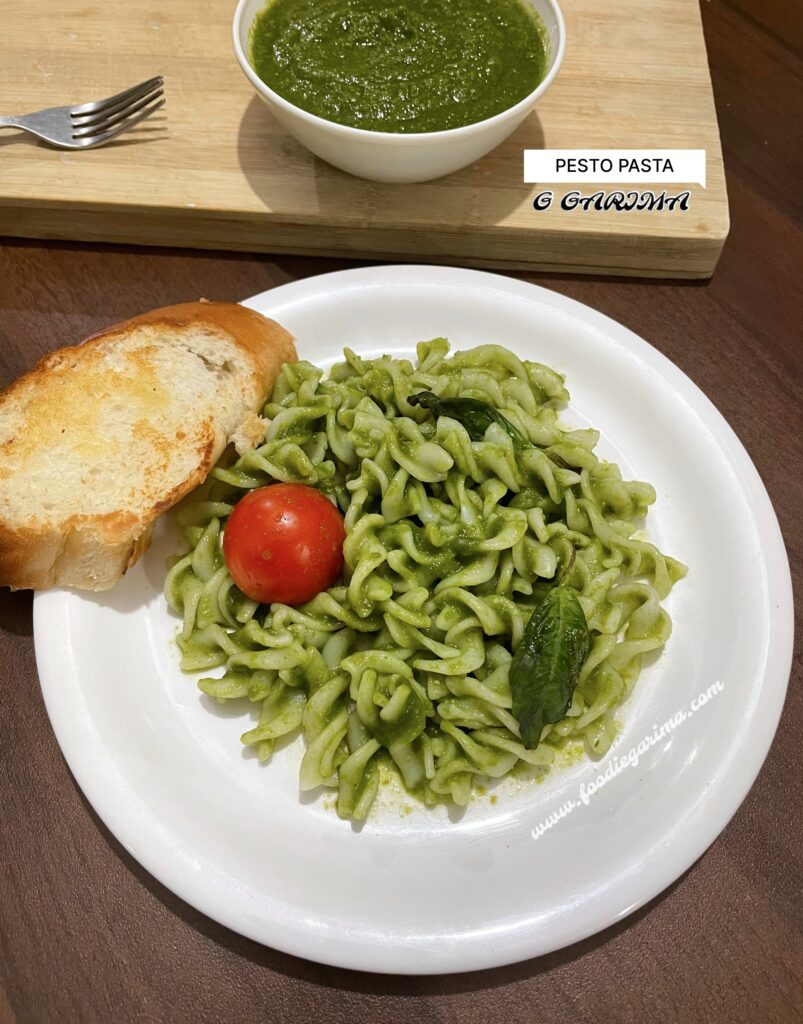5 January, 2024
PESTO PASTA RECIPE

Pesto Pasta is a dish made by tossing cooked Pasta with Pesto Sauce. It typically involves boiling Pasta until it is Al Dente, then combining it with a desired amount of homemade or store-bought Pesto Sauce.
The Pesto coats the Pasta, infusing it with its aromatic flavors, creating a delicious and flavorful dish. Often, additional ingredients like Cherry Tomatoes, Roasted Vegetables, Grilled Chicken can be added to enhance the taste further.
The Essence of Pesto Sauce:
Pesto is a traditional Italian Sauce primarily made with fresh Basil Leaves, Pine Nuts (for sometimes Walnuts), Garlic, Parmesan Cheese, and extra virgin Olive Oil. These ingredients are crushed or blended together to create a thick, aromatic paste. This Italian-origin condiment is renowned for its herbaceous flavor and versatility in culinary applications.
Let’s get started with the PESTO PASTA RECIPE.
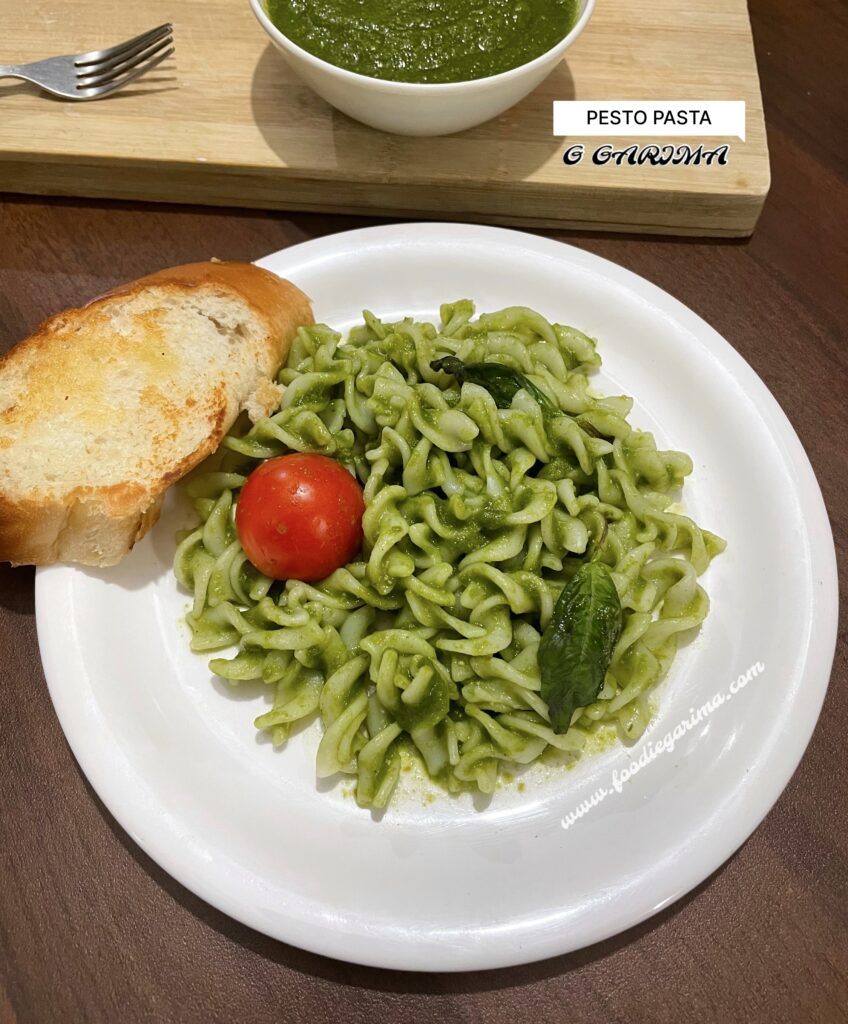
INGREDIENTS:
| For Basil Pesto Sauce | For Pasta |
|---|---|
| 2 cups Fresh Basil Leaves (Washed) | 50 grams Pasta |
| ½ cup Parmesan Cheese (grated) | ½ Litre or 500 ml Water (for boiling) |
| ½ cup extra virgin Olive Oil | ½ tsp Salt |
| ⅓ cup Pine Nuts (you can also use Walnuts or Almonds) | |
| 3 nos Garlic Cloves (peeled) | |
| Salt to taste | |
| freshly ground Black Pepper to taste |
INSTRUCTIONS:
1. Making Pesto Sauce:
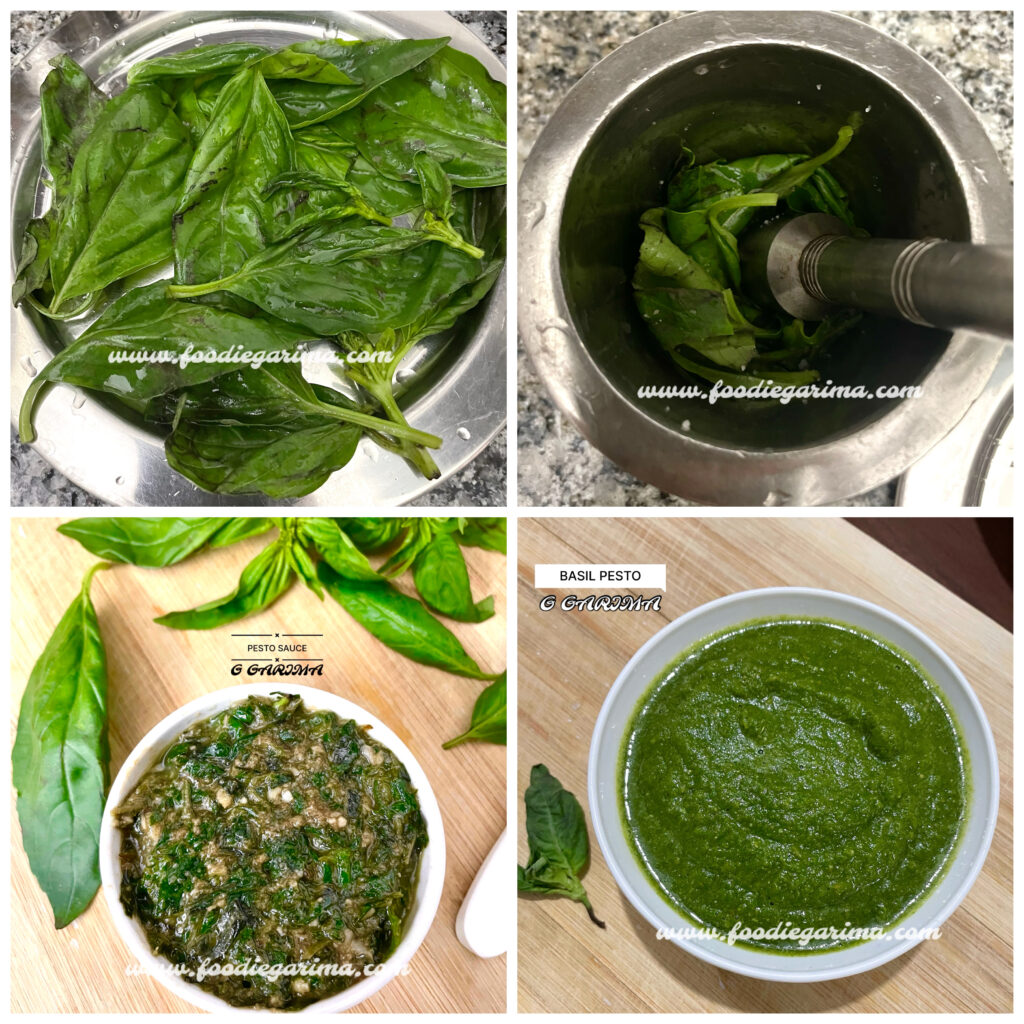
- Toast the Pine Nuts in a dry skillet over medium heat for a few minutes until they turn lightly golden. Make sure to stir them frequently to prevent burning. Remove from heat and let them cool.
- In a food processor or blender, combine the Basil Leaves, cooled Pine Nuts, Garlic Cloves, and Parmesan Cheese. Pulse a few times until the ingredients are roughly chopped.
- While the food processor is running, slowly pour in the Olive Oil in a steady stream. Continue blending until the mixture becomes a smooth paste. You may need to stop and scrape down the sides of the processor bowl with a spatula to ensure all ingredients are well incorporated.
- Blend these ingredients together gradually until achieving the desired consistency.
- Season the Pesto with Salt and Pepper to taste. Blend once more to combine the flavors.
- Transfer the Pesto to a clean jar or airtight container. If not using immediately, you can store it in the refrigerator. To prevent oxidation, you can drizzle a thin layer of Olive Oil on the surface of the Pesto before sealing the container.
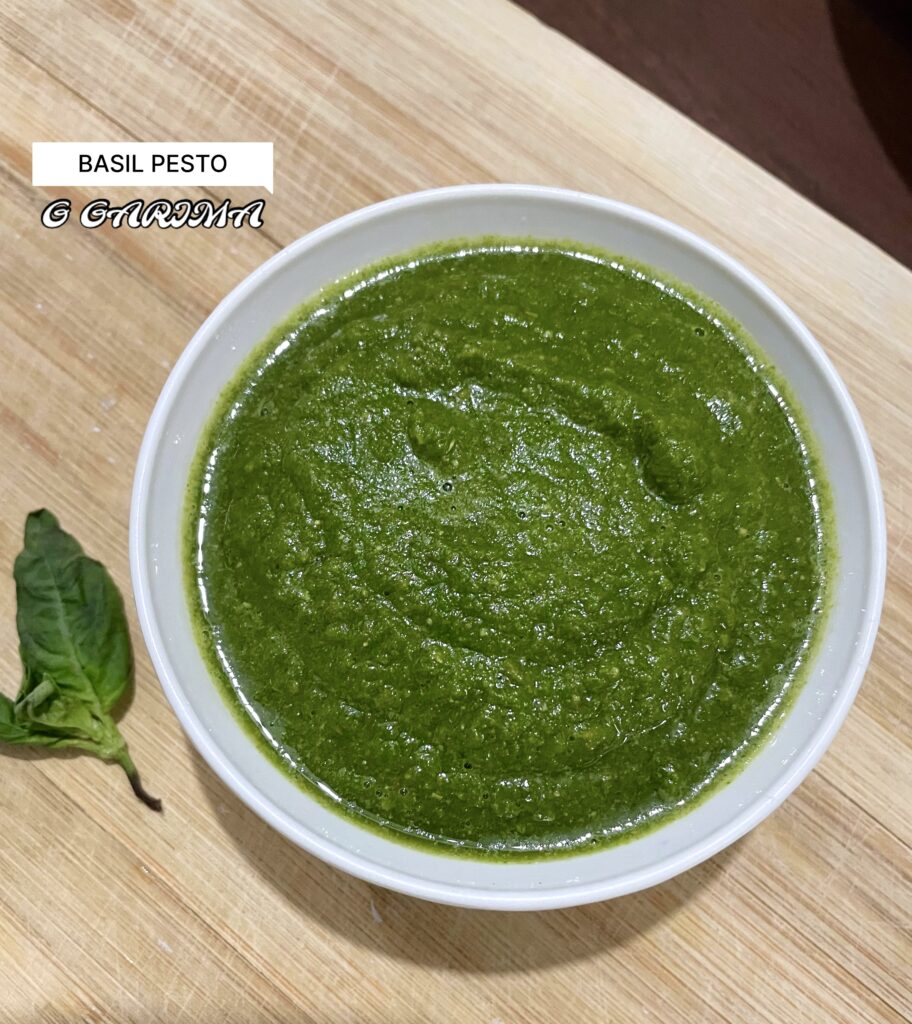
Two Methods:
While preparing Pesto, there are different methods to achieve different textures and consistency. I made it in two ways. One approach involves using a mortar and pestle to create a coarse, rustic Pesto, while another method using a blender for a smoother texture.
Using a mortar and pestle is a traditional way to make Pesto that preserves the coarse texture of the ingredients. On the other hand, using a blender offers a quicker and more efficient way to achieve a smoother consistency. Both methods have their unique advantages.

2. Boiling Pasta:
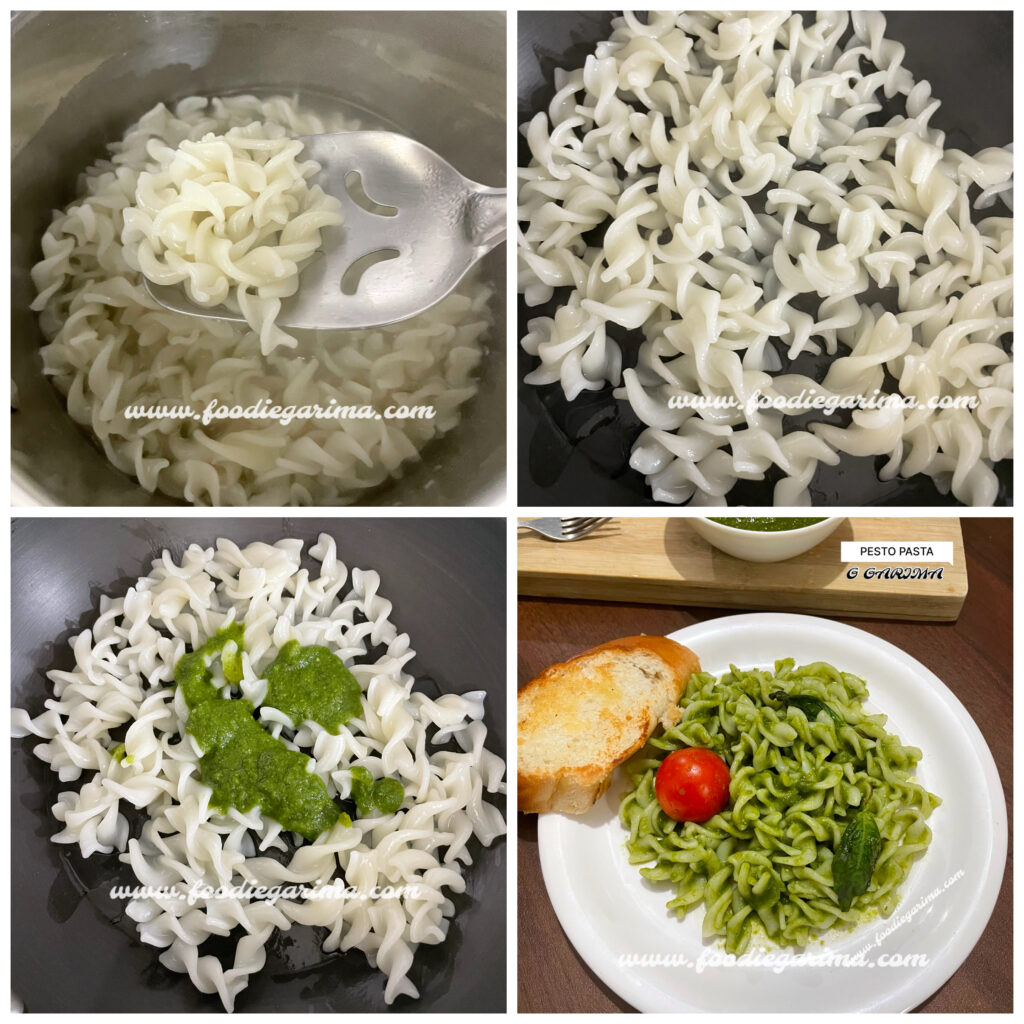
Boiling Pasta involves a few key steps to ensure it is cooked to the right texture without being overdone or too sticky.
- Choose a pot that is large enough to hold plenty of Water. The Pasta needs space to cook evenly without sticking together.
- Heat Water in a pot and once the Water comes to a rolling boil, add Salt. This helps to flavor the Pasta from within.
- Wait for the Water to come to a vigorous, rolling boil before adding the Pasta and Salt. This ensures that the Pasta cooks evenly.
- Carefully add the Pasta to the boiling Water, stirring immediately after adding to prevent sticking. Stir occasionally during cooking to prevent clumping.
- Check the cooking time on the pasta package. Set a timer and cook the pasta for the recommended time. Stir occasionally while it cooks.
- To check if the pasta is cooked to your desired level of doneness, test a piece. Pasta should be “Al Dente,” meaning it is cooked through but still slightly firm to the bite.
- I cooked it for 15 to 20 minutes, a little more than Al Dente. Adjust the cooking times based on personal preferences and the type of pasta you’re using.
- Once the pasta is cooked to your liking, turn off the heat and carefully drain its water using a colander. Do not rinse the pasta unless you’re making a cold pasta dish.
- Our perfectly boiled conchiglie pasta is ready to use.
3. Combining Pasta and Pesto:
- In a large mixing bowl, toss the cooked pasta with the desired amount of prepared pesto sauce until the pasta is evenly coated.
- Serve the Pesto Pasta warm.
